Ultrafast & Terahertz Photonics Group
|
Ultrafast optical techniques provide powerful probes of different states of matter, using light pulses that have femtosecond duration. In Warwick our activities span a number of areas:
|
Group facilitiesThe Group has labs across the campus, in the main Physics building, Materials and Analytical Sciences, and Millburn House. Read more about our experimental capabilities in terahertz science and technology. We also run the Warwick Centre for Ultrafast Spectroscopy Research Technology Platform. 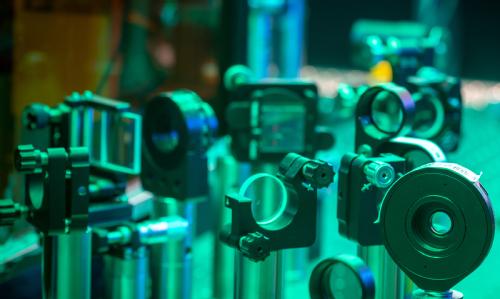
We make use of a wide range of Warwick's excellent materials analysis equipment, including X-ray diffraction, Raman spectroscopy, electron microscopy and magnetometry. |
Join the group!Please get in touch if you are interested in a PhD or MSc by Research in the group. We are also happy to support postdoctoral researchers to apply for fellowship schemes. 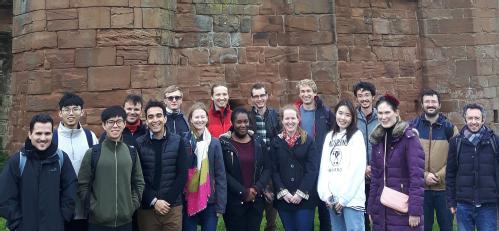
Group, Theses & PhotosContact details for our current group members and our photo gallery. For recent theses from the group, please see here. |
Research areas
Nanomaterials
We use pump/probe spectroscopy to study how light and matter interact on femtosecond to nanosecond timescales. Using visible probes we can track electronic processes, while infrared radiation lets us study vibrational states of molecules and atomic-scale defects in semiconductors.
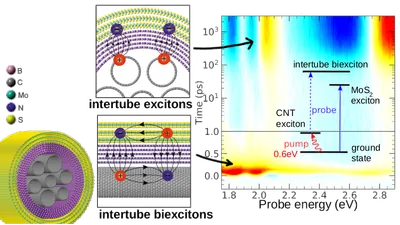
Recent papers:
Quantifying photoluminescence variability in monolayer molybdenum disulfide films grown by chemical vapour deposition
The 3237 cm−1 diamond defect: Ultrafast vibrational dynamics, concentration calibration, and relationship to the N3VH0 defect
Terahertz medical imaging
Performing in vivo studies of the THz properties of skin is a major initiative in the group, supported by the EPSRC Terabotics Programme GrantLink opens in a new window. We develop robust measurement protocols and test them on a statistically significant number of patients, cross-checking with other methods.
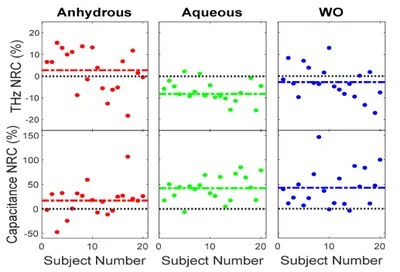
Recent papers:
Terahertz probe for real time in vivo skin hydration evaluation
Spectroscopic insight on impact of environment on natural photoprotectants
The 2023 terahertz science and technology roadmap
Semiconductors and Energy materials
A major strand of our research is to improve our knowledge of the fundamental science underpinning new semiconductor materials, such as metal-halide perovskites, which are often attractive for photovoltaic applications.
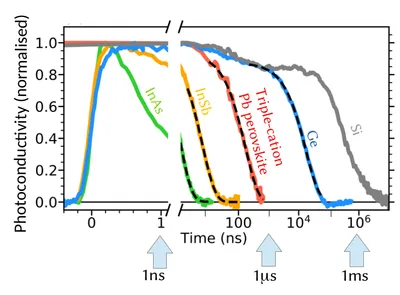
Recent papers:
Terahertz Emission via Optical Rectification in a Metal-Free Perovskite Crystal
High-bandwidth perovskite photonic sources on silicon
Resolving the Ultrafast Charge Carrier Dynamics of 2D and 3D Domains within a Mixed 2D/3D Lead-Tin Perovskite
Terahertz components, methods and techniques
We develop new THz devices and integrate them into novel systems designs that can perform THz imaging and THz spectroscopy faster, and with increased capabilities (e.g. polarisation control; robot-controlled probes).
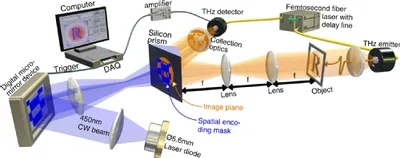
Recent papers:
Simultaneous measurement of orthogonal terahertz fields via an emission multiplexing scheme
Optimum Optical Designs for Diffraction-Limited Terahertz Spectroscopy and Imaging Systems Using Off-Axis Parabolic Mirrors
The 2023 terahertz science and technology roadmap
Recent publication highlights [filter by topic: view all | highlights | THz | perovskites | nano | biomedical]
A Robust Protocol for In Vivo THz Skin Measurements
H. Lindley-Hatcher, A. I Hernandez-Serrano, Q. Sun, J. Wang, J. Cebrian, L. Blasco, E. Pickwell-MacPherson
J Infrared Milli Terahz Waves 40 980 (August 2019) [ pdf ] [ ref ]
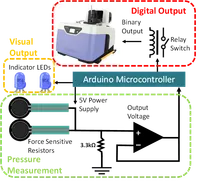 This work presents an experimental setup to control the way in which pressure interferes with the repeatability of in vivo THz skin measurements. By integrating a pressure sensor circuit into our THz system, it is possible to identify which measurements were taken within a previously specified pressure range. The live response of the pressure sensor helps to acquire data within the desired pressure leading to greater consistency of data between measurements. Additionally, a protocol is proposed to help achieve repeatable results and to remove the effects of the natural variation of the skin through the course of the day. This technique has been shown to be able to quantify the changes induced in the skin following the application of a moisturising skin product and shows the measured result to be significantly different from natural skin variation. This research therefore prepares the way for further studies on the effectiveness of different skin products using in vivo THz measurements.
This work presents an experimental setup to control the way in which pressure interferes with the repeatability of in vivo THz skin measurements. By integrating a pressure sensor circuit into our THz system, it is possible to identify which measurements were taken within a previously specified pressure range. The live response of the pressure sensor helps to acquire data within the desired pressure leading to greater consistency of data between measurements. Additionally, a protocol is proposed to help achieve repeatable results and to remove the effects of the natural variation of the skin through the course of the day. This technique has been shown to be able to quantify the changes induced in the skin following the application of a moisturising skin product and shows the measured result to be significantly different from natural skin variation. This research therefore prepares the way for further studies on the effectiveness of different skin products using in vivo THz measurements.
Ionic liquid gated carbon nanotube saturable absorber for switchable pulse generation
Y. Gladush, A. Mkrtchyan, D. Kopylova, A. Ivanenko, B. Nyushkov, S. Kobtsev, A. Kokhanovskiy, A. Khegai, M. Melkumov, M.G. Burdanova, M. Staniforth, J. Lloyd-Hughes and A.G. Nasibulin
Nano Letters 19 5836 (Aug 2019) [ pdf ] [ ref ]
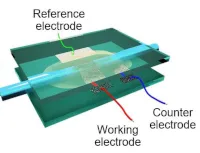 Materials with electrically tunable optical properties offer a wide range of opportunities for photonic applications. The optical properties of the single-walled carbon nanotubes (SWCNTs) can be significantly altered in the near infrared region by means of electrochemical doping. The states’ filling, which is responsible for the optical absorption suppression under doping, also alters the nonlinear optical response of the material. Here, for the first time, we report that the electrochemical doping can tailor the nonlinear optical absorption of SWCNT films and demonstrate its application to control pulsed fiber laser generation. With a pump-probe technique we show that under an applied voltage below 2 V the photo-bleaching of the material can be gradually reduced and even turned to photo-induced absorption. Furthermore, we integrated a carbon nanotube electrochemical cell on a side-polished fiber to tune the absorption saturation and implemented it into the fully polarization-maintaining fiber laser. We show that the pulse generation regime can be reversibly switched between femtosecond mode locking and microsecond Q-switching using different gate voltages. This approach paves the road towards carbon nanotube optical devices with tunable nonlinearity.
Materials with electrically tunable optical properties offer a wide range of opportunities for photonic applications. The optical properties of the single-walled carbon nanotubes (SWCNTs) can be significantly altered in the near infrared region by means of electrochemical doping. The states’ filling, which is responsible for the optical absorption suppression under doping, also alters the nonlinear optical response of the material. Here, for the first time, we report that the electrochemical doping can tailor the nonlinear optical absorption of SWCNT films and demonstrate its application to control pulsed fiber laser generation. With a pump-probe technique we show that under an applied voltage below 2 V the photo-bleaching of the material can be gradually reduced and even turned to photo-induced absorption. Furthermore, we integrated a carbon nanotube electrochemical cell on a side-polished fiber to tune the absorption saturation and implemented it into the fully polarization-maintaining fiber laser. We show that the pulse generation regime can be reversibly switched between femtosecond mode locking and microsecond Q-switching using different gate voltages. This approach paves the road towards carbon nanotube optical devices with tunable nonlinearity.
Scalable interdigitated photoconductive emitters for the electrical modulation of terahertz beams with arbitrary linear polarization
C.D.W. Mosley, M. Staniforth, A. I. Hernandez Serrano, E. Pickwell-MacPherson and J. Lloyd-Hughes
AIP Advances 9, 045323 (Apr 2019) [ pdf ] [ ref ]
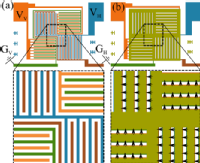 A multi-element interdigitated photoconductive emitter for broadband THz polarization rotation is proposed and experimentally verified. The device consists of separate pixels for the emission of horizontally and vertically polarized THz radiation. The broadband (0.3–5.0 THz) nature of the device is demonstrated, and the polarization angle of the generated far-field THz radiation is shown to be readily controlled by varying the relative bias voltage applied to the horizontally and vertically emitting pixels. The device is scalable in design, and with its simple method of polarization rotation it allows the modulation of the generated THz polarization at rates significantly faster than those achievable in ellipsometry systems based on mechanically rotating components.
A multi-element interdigitated photoconductive emitter for broadband THz polarization rotation is proposed and experimentally verified. The device consists of separate pixels for the emission of horizontally and vertically polarized THz radiation. The broadband (0.3–5.0 THz) nature of the device is demonstrated, and the polarization angle of the generated far-field THz radiation is shown to be readily controlled by varying the relative bias voltage applied to the horizontally and vertically emitting pixels. The device is scalable in design, and with its simple method of polarization rotation it allows the modulation of the generated THz polarization at rates significantly faster than those achievable in ellipsometry systems based on mechanically rotating components.
Utilizing multilayer structures to enhance terahertz characterization of thin films ranging from aqueous solutions to histology slides
Q. Sun, K. Liu, X. Chen, X. Liu, A. I Hernandez-Serrano, E. Pickwell-MacPherson
Optics Letters 44 2149 (April 2019) [ pdf ] [ ref ]
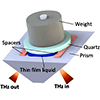 We propose a multilayer geometry to characterize thin-film samples in reflection terahertz time domain spectroscopy. Theory indicates that this geometry has higher sensitivity compared to ordinary transmission or reflection geometries when characterizing both low- and high-absorption samples. Pure water and water–ethanol mixtures are measured to verify the characterization accuracy of the proposed geometry and its capability to measure trace liquids. Paraffin-embedded oral cancer tissue is imaged to further show how the proposed geometry enhances the sensitivity for solid low-absorptive films.
We propose a multilayer geometry to characterize thin-film samples in reflection terahertz time domain spectroscopy. Theory indicates that this geometry has higher sensitivity compared to ordinary transmission or reflection geometries when characterizing both low- and high-absorption samples. Pure water and water–ethanol mixtures are measured to verify the characterization accuracy of the proposed geometry and its capability to measure trace liquids. Paraffin-embedded oral cancer tissue is imaged to further show how the proposed geometry enhances the sensitivity for solid low-absorptive films.

